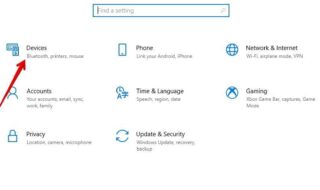Why are these “Key” tips to checking the legitimacy of a website? They are key tips because this article teaches you how to recognize a scammer rather than recognizing their methods. Too many online articles teach you the various tricks and misdirections that online scammers use, but these change all the time. However, the scammers themselves tend to stick to the same modus operandi, so here are a few key tips on how to stay safe and determine which websites are legitimate.
Contents
Scammers Know What You Know

Perhaps the biggest thing you should remember is that every tip you read online about scam detection and website legitimacy is also being read by the scammers. Just think of all the online “Advice” that people get for spotting fake or scam websites. All the tips have workarounds. For example:
- Look for a real physical location address / Scammers add real addresses all the time
- Check the padlock in the address bar / Scam websites have this, it costs $3 extra per month
- Verify the website’s trust seal / Getting a trust seal takes 3 weeks maximum
- Check the company’s social media presence / So easy to fake that there is a black market culture dedicated to it
- Use the Google Transparency Report / Ha ha ha, why not check SpongeBob’s transparency report while you are at it. The doctrine behind their transparency report was only built so they could operate in the EU without the crybaby states complaining.
But wait, if scammers already know all the tricks, what more can an honest person do? Well, there are two answers to that. The first is to use a scam tracking service, website or extension. The second is to exploit what “You” know about the scammers. Both methods are discussed below.
Using a Scam Tracker
There is now more online crime than there are murders, thefts and assaults. In fact, online crime would be the highest crime rate in the country if it were not for people speeding in cars and parking incorrectly. Though with that said, much online crime goes unreported, and often even unnoticed (hackers and the like), so getting a true crime number is very difficult.
Nevertheless, scam-tracking websites now work in a similar fashion to paid virus checkers. In the virus-checking industry, teams of engineers spend all day finding new viruses and then finding ways to guard against them and fix them. The same is happening with scam-tracking companies like Web Paranoid. They have teams of analysts working night and day to find scams, to find indicators of scams, and concluding upon previously trusted websites that turned out to be scams (we all make mistakes, it is how we learn). In short, when you use these sorts of services, websites and extensions, you are letting other people be vigilant on your behalf. It doesn’t let you off the hook in terms of personal online responsibility, but it is one more guard/protection against nefarious online forces.
Exploit What “You” Know About the Scammers
Unless you are a big player, unless you own lots of online assets, and/or unless somebody is targeting you personally, you can mostly avoid the scammers by understanding how they operate.
They are not looking for the hard sell. They are looking to cast as wide of a net as possible in order to gain as many chances for a win as possible. For example, a scammer could set up a fantastic website, build up its online credibility, and hope it isn’t blacklisted by Internet service providers before making some good money. Or, the scammer can set up 30 cheap websites, promote the heck out of them and hope to pull in as many victims as possible before all the websites are eventually blacklisted. This is why scammer websites are often cheaply made.
Greed is an easy motivator, and it tends to catch younger and more vulnerable people. That is why most scammers will offer free money or some sort of supermassive discount on their products (products that are never sent out). They fake proof of postage and proof of delivery, and they have your money. For example, let’s say the scammer is selling laser engravers (a fairly recent scam). They could go to the trouble of promoting the device at full price, creating a well-made sales funnel, and cheating a handful of people out of $800. Or, they can offer them via adverts on social media for $24.99, and they will catch more victims. Again, scammers can take the more deceptive and seemingly legitimate root, but it is easier to appeal to people’s greed. That is why when a deal seems too good to be true, it often is.
The Misspellings Are On Purpose
Haven’t you ever wondered why spam emails and scam websites have misspellings? Why do they offer seemingly real things, but they use incorrect phrasing and easy-to-see-through sales chatter? Haven’t you ever wondered why in a world of free online spell checkers, these websites are still getting it wrong?
They are getting it wrong on purpose. These are websites and scams targeted at the most vulnerable in our community. The kids and impaired people who honestly believe that the “Logan-Paul Dollar Coin” will really reach the moon. One of the best things about going after the most vulnerable is not only that they will probably fall for the scam, but they are also less likely to report the website or take any sort of action to have it banned or taken down.
Final Thoughts – What If Everything Seems Fine
Let’s say you think the cheap beef website looks okay. The starting offer is stupidly cheap, but you figure that most new customer deals are. You have checked with Web Paranoid and no scams have been reported yet. You checked their reviews and there is a mix of good and bad, so they are probably not reputation managing their bad PR away. So, what do you do? Check with your friends, with people on social media? Perhaps yes, but some scams are simply so good that you are probably going to get caught now and again. The best you can do is to protect yourself. Try new websites with a burnable email address (one you create just for online shopping), and use a credit card so you can charge back your payment if things go wrong. Also, learn about delivery scams to avoid companies saying they have delivered a package when they haven’t.



